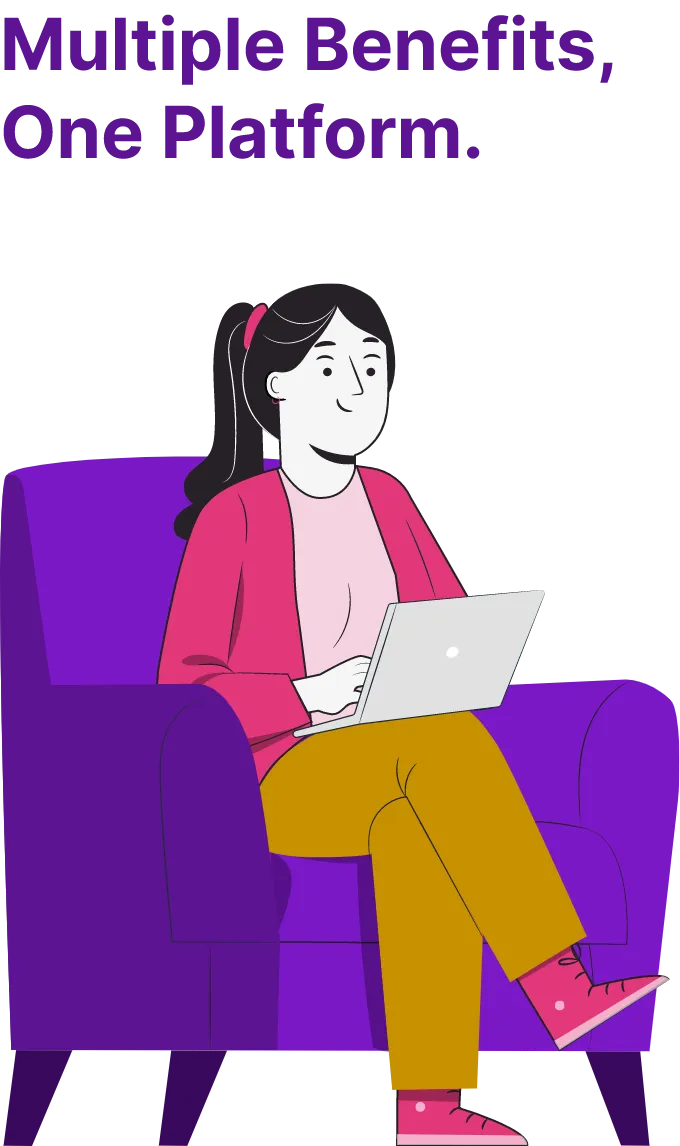Work has changed, so must insurance
The workplace in 2025 faces a completely new set of challenges, and with it, new workplace risks. From the explosive rise of freelancing to the ongoing mental health crisis, rapid AI-driven role changes, and even climate-related disruptions, the definition of workplace safety and wellbeing has expanded dramatically. Recent global data by the Spill team shows freelancers now make up 47% of the workforce, while a staggering 84% of employees have experienced at least one mental health challenge in the past year. These shifts highlight a critical gap: traditional health insurance coverage is no longer enough. Employers and policymakers must rethink protection models to match the realities of today’s evolving work landscape.
1. Mental health: a workplace necessity
Mental health is so much more than just a wellness trend, as it’s a workplace necessity. According to the World Health Organization (WHO), work-related stress, depression, and anxiety are now among the leading causes of lost productivity worldwide. Long hours, job insecurity, and the isolating nature of remote work have intensified the pressure. Hybrid employees often feel disconnected, undervalued, or “always on,” which can lead to emotional fatigue and burnout.
What can HR do?
Move beyond surface-level wellness initiatives. Employee Assistance Programs (EAPs), confidential counseling services, dedicated mental health sick days, and group health insurance with psychiatric coverage can make a tangible difference. For high-pressure industries, policies that cover workplace-induced mental health claims can help safeguard both employees and the company’s culture of care.
2. Digital and cybersecurity threats
Cyber threats are an IT concern that comes with an organizational risk. From phishing scams targeting HR teams to ransomware shutting down business systems, the consequences can be severe. WHO warns that digital disruption and cyber vulnerabilities can indirectly impact employee well-being by increasing workplace stress and uncertainty.
What can HR do?
Cyber liability insurance is an essential safeguard, protecting against legal costs, reputational harm, and recovery expenses following a breach. Pair it with business interruption coverage to account for tech-related downtime, and ensure phishing fraud coverage extends to employees working remotely or on personal devices.
3. AI, robotics, and technology-driven risks
Automation and AI are transforming the workplace, but they come with new risks. WHO notes that rapid technological change can increase anxiety and strain among workers adapting to new systems. AI errors, robotic malfunctions, and data privacy concerns can all lead to operational and reputational setbacks.
What can HR do?
Include errors and omissions (E&O) coverage for tech products, AI liability insurance, and product liability for robotic tools in your business protection strategy. These policies help address potential claims from faulty algorithms, system failures, or unintended harm caused by emerging workplace technologies.
4. Hybrid and remote work ergonomics
The shift to remote and hybrid work has introduced ergonomic challenges that WHO links to long-term musculoskeletal disorders and eye strain. Poor home-office setups, repetitive movements, and extended screen time can lead to health issues that affect both well-being and productivity.
What can HR do?
Update workers’ compensation policies to cover home-office injuries. Offer ergonomic risk assessments remotely and provide health plans that include physiotherapy, posture correction programs, and preventive care to address strain before it becomes chronic.
5. Workplace safety and emergency preparedness
Emergencies, whether fires, natural disasters, or workplace violence, can occur without warning. WHO emphasizes that a lack of preparedness not only increases physical risks but also heightens psychological stress for employees.
What can HR do?
Adopt crisis management insurance, emergency response coverage, and business continuity plans. For high-risk sectors or busy work environments, consider workplace violence coverage to ensure your employees feel secure and supported in any situation.
Secure your workplace for the future, book a call with a Pazcare expert today.
Conclusion: Rethink risk, rethink insurance
The workplace in 2025 is a complex ecosystem of people, platforms, and unpredictable challenges. From AI-powered tools to climate-driven shutdowns, today’s risks demand a fresh insurance perspective, one that is holistic, proactive, and people-first.
It’s not enough to simply insure office spaces or provide basic group health plans. Businesses need layered protection: for employee well-being, operational continuity, digital security, and long-term sustainability. By updating your insurance portfolio to reflect the realities of modern work, you don’t just protect your business, you empower your people to thrive in a world that’s constantly evolving.





.svg)
.svg)
